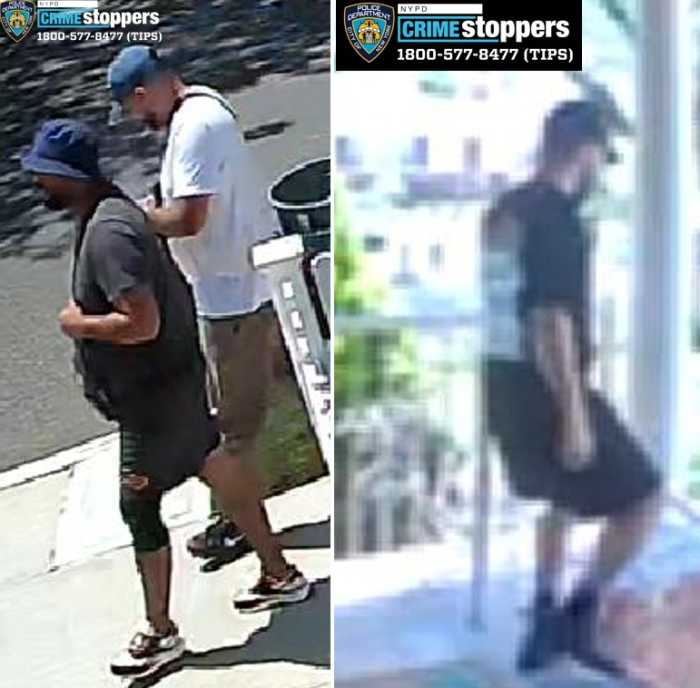By Julie Shapiro
Forest City Ratner executives threatened to halt construction of the new school on Beekman St. unless they receive a 20-year tax break from the city.
At an emergency meeting of Community Board 1’s Executive Committee June 18, Forest City said funding for the pre-K-8 school and 76-story apartment tower was in jeopardy. In March, Forest City closed on $680 million in construction financing for the project, but MaryAnne Gilmartin, an executive vice president at Forest City Ratner, said the money could disappear unless Ratner also receives a 20-year 421-a tax abatement.
Without the abatement, “Work would certainly stop on [the] site and then we would have delays,” Gilmartin said.
Delays are not new for the project. The school, originally slated to open in fall 2008, was pushed to fall 2009 after an education budget dispute between the city and the state, and then it was pushed to fall 2010 because Ratner had trouble getting the financing. Many community members, including Assembly Speaker Sheldon Silver, who recruited Ratner to build the school, doubt the fall 2010 date and think the school will not be safe to open until fall 2011 because of the construction of the Frank Gehry-designed tower above it.
Eager to avoid more setbacks, the Executive Committee weighed Forest City’s request that the board endorse its application for the tax abatement. C.B. 1 had little time to consider the issue, because Forest City needed an answer immediately. The rules for 421-a abatements changed on June 19, and under the new rules, the developer would only be eligible for a 10-year abatement, not a 20-year one, Gilmartin said. The 10-year abatement would not be enough to keep the project moving forward, she said.
The board had 45 days to comment on the application, but in order to give Ratner a shot at getting the 20-year abatement, the board had to make a decision by June 19, before the 45 days were up. Had the board used the full 45 days to make a comment, they would have run out the clock and prevented Ratner from getting the 20-year abatement, said Seth Donlin, spokesperson for the city Department of Housing Preservation and Development. It was a rare instance of the board having veto power over financing for a major development, and it only occurred because of the timing of the changes in the 421-a rules.
In an ironic twist, the only way the board could have denied Ratner the tax break was to remain silent — the board’s resolution harshly criticizing the application fulfilled the public comment requirement and served as a green light.
Julie Menin, chairperson of C.B. 1, was torn over whether to give Ratner the abatement, because she thought market-rate buildings should not receive government subsidies. But at the same time, she did not want to risk killing the project by delaying comment.
“We don’t want to do anything to jeopardize the financing of the school,” Menin said.
So she decided on a compromise, which the board supported: The board passed a resolution that criticizes the H.P.D. for awarding abatements to unaffordable projects, but in passing the resolution, the board also tacitly supported H.P.D.’s decision to give Ratner the abatement and keep the project moving.
Workers are already framing the fifth floor of the Beekman tower, but just because the building is under construction did not mean it was grandfathered into the expiring 421-a rules, Donlin said. Forest City Ratner and any other developers who wanted to take advantage of the old 421-a provisions had to apply before the changeover.
The Beekman tower is eligible for a 20-year abatement under the old 421-a rules because it received “substantial government assistance” in the form of Liberty Bonds, Donlin said. But once the rules on 421-a change, it won’t be enough for developers to just receive government assistance — they have to use that assistance to create at least 20 percent affordable housing in their building.
Forest City Ratner executives have repeatedly refused to add affordable apartments to the Beekman building, so under the new rules, they would not qualify for the 20-year abatement. At the Executive Committee meeting, Gilmartin had trouble convincing board members that Forest City needs the 20-year tax break for a building where rents will start at $4,000 to $15,000.
“I find it absolutely obscene that a landlord that is going to be charging $15,000 a month for an apartment is still asking for tax abatements on top of rents like that,” said Linda Belfer, chairperson of the Battery Park City Committee. “It’s unbelievable to me that we good people have to even sit here and discuss this. This is not a low-income project.”
John Fratta, chairperson of the Seaport/Civic Center Committee, agreed, saying, “To call this affordable housing is a slap in the face of our community…. I would be opposed to [giving] any tax credits to any development that doesn’t have strictly affordable housing.”
Tenants of 421-a projects start out paying market rate, but the yearly rent increases are determined by the Rent Guidelines Board, which offers a measure of stability. Once the term of the abatement expires, the apartments return to market-rate rents.
Lisa Yee, director of tax incentives for the H.P.D., told the board that Forest City Ratner met the preliminary qualifications for the 20-year 421-a abatement. C.B. 1’s objections, she said, are supposed to be limited to the developer’s history and whether the project met the qualifications — but instead, the board objected to the qualifications themselves.
In a resolution that passed overwhelmingly, C.B. 1 said that regardless of whether the Beekman tower met the H.P.D.’s technical criteria for tax abatements, the project is too unaffordable to receive public money. The board urged H.P.D. to reconsider its criteria and think carefully before granting the benefits.
But at the same time, the board said the decision on the tax abatement should not have any impact on the school’s construction. The project received $200 million in Liberty Bonds because of Forest City’s decision to build the school, so the developer cannot renege on that promise, board members said.
The Liberty Bonds also required that Ratner make a commitment to affordable housing, either by building affordable housing on site or by donating money to a city affordable housing fund. Ratner elected to keep the apartments market rate, so the city Housing Development Corporation put $6 million of the fees generated from the Liberty Bond financing toward affordable housing, according to an H.D.C. release.
The 903 units in the tower will be 20 percent studies, 60 percent one-bedrooms, 18 percent two-bedrooms and 2 percent three-bedrooms.
C.B. 1 has never weighed in on 421-a tax abatements before, but Menin, board chairperson, wants to change that.
“We need to have our voice heard,” she told Downtown Express before the emergency meeting. “I don’t believe the city’s definition of ‘affordable’ is workable.”
Menin directed the Planning and Community Infrastructure Committee, chaired by Jeff Galloway, to develop standards for responding to 421-a applications from developers.
Galloway wants to see the board take an active role as more than just a “fact checker” for H.P.D. Once the board builds a track record of responding to 421-a applications, H.P.D. will take the board’s feedback more seriously, Menin said. She has spoken with other leaders of community boards, who regularly review 421-a applications, and they told Menin they have been able to affect H.P.D.’s policy with their comments.
The full board voted on the 421-a resolution at its meeting Tuesday night, although the comment was already a moot point because the abatement had been granted. Some board members thought Forest City used the threat of delaying the school as a way of getting what they wanted from the board.
“I don’t think the project or the school were ever really in jeopardy,” said Paul Hovitz, a board member. “I think they were manipulating us [into helping them get the abatement]. We were being blackmailed.”
With reporting by Laura Latzko
























